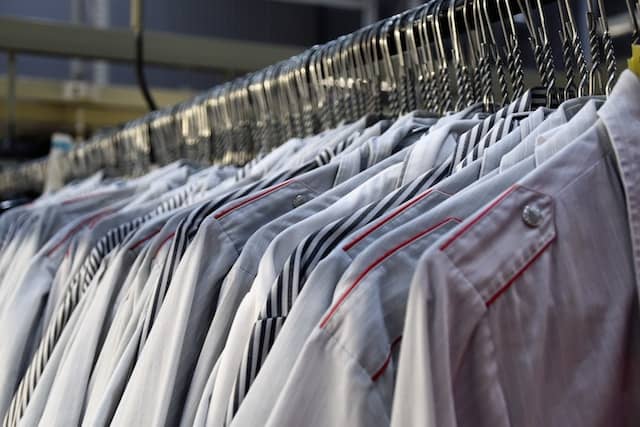India has emerged as a major player in the global apparel manufacturing and supply chain industry. With a rich history and tradition of textile production, India has established itself as a reliable source of quality garments and textiles for both domestic and international markets.
This blog post aims to explore the significance of India in the global apparel industry, highlighting its historical background, current status, driving factors, challenges, and future prospects. By the end of this post, readers will gain a deeper understanding of India’s role in the apparel industry and its potential for growth and expansion.
Historical background
India has a rich history of textile production, with evidence of cotton cultivation and spinning dating back to the Indus Valley Civilization over 5,000 years ago. Over the centuries, India has developed a thriving textile and apparel industry, characterized by skilled craftsmanship, intricate designs, and high-quality fabrics.
One of the key milestones in India’s textile industry was the establishment of the East India Company in 1600, which helped facilitate the export of Indian textiles to European markets. This led to a surge in demand for Indian textiles, particularly cotton, which was known for its softness and durability.
During the British colonial period, India’s textile industry suffered a decline as British-made textiles flooded the market, resulting in the loss of many skilled artisans and weavers. However, after independence in 1947, India’s government implemented policies to revive the textile industry, including subsidies, investment in infrastructure, and protectionist measures to promote domestic production.
India’s traditional strengths in textile production lie in its diverse range of natural fibers, including cotton, silk, wool, and jute, and its expertise in spinning, weaving, dyeing, and printing. The country has a vast network of small-scale and cottage industries, producing a wide range of fabrics and garments for both domestic and international markets.
According to the India Brand Equity Foundation, India’s textile and apparel industry is currently the second largest employer in the country, providing employment to over 45 million people. The industry accounts for 5% of India’s GDP and 13% of the country’s export earnings, making it a vital contributor to the Indian economy.
Current status of India’s apparel industry

India’s apparel industry has come a long way since its early beginnings, and today, it is a major player in the global supply chain. The industry is characterized by a mix of small, medium, and large-scale players, with a focus on value-added manufacturing and exports.
India’s apparel production has been steadily increasing over the years, with the industry’s production capacity estimated at 31 billion garments per annum, as per the Ministry of Textiles. According to the India Brand Equity Foundation, India’s apparel exports were valued at $16.41 billion in 2020-21, accounting for 5.3% of the country’s total merchandise exports.
In terms of its position in the global apparel supply chain, India is a key player, competing with countries like China, Bangladesh, and Vietnam. India is particularly strong in the production of cotton garments, with a focus on high-quality, value-added products such as organic cotton, denim, and knitwear. The country’s diverse range of natural fibers and textiles, coupled with its skilled workforce, make it an attractive destination for global brands looking to diversify their sourcing options.
Some of the major players in India’s apparel industry include large vertically integrated textile and garment manufacturers like Arvind Mills, Raymond Group, and Aditya Birla Fashion and Retail, as well as smaller-scale players specializing in specific niche segments. These players are spread across different regions of the country, with clusters of textile and garment production concentrated in states like Tamil Nadu, Maharashtra, and Gujarat.
Overall, India’s apparel industry has established a strong presence in the global supply chain, with a focus on value-added production and exports. However, the industry still faces several challenges, including infrastructure bottlenecks, logistical hurdles, and the need for further upskilling and modernization to remain competitive.
Factors driving India’s success in apparel manufacturing

India’s success in apparel manufacturing can be attributed to several factors, including its abundance of raw materials and skilled labor, favorable government policies and incentives, increasing adoption of technology and automation, and growing demand for sustainable and ethical production.
India is rich in natural resources, including cotton, silk, wool, and jute, which provide a ready source of raw materials for the textile and apparel industry. The country also has a large pool of skilled artisans and craftsmen who bring years of experience and expertise to the production process.
The Indian government has been supportive of the textile and apparel industry, with policies aimed at promoting domestic production, exports, and investment in the sector. The introduction of the “Make in India” campaign in 2014, aimed at boosting domestic manufacturing across all sectors, including textiles and apparel, has helped further drive growth in the industry. The government has also implemented a range of incentives and subsidies to encourage investment in the sector, such as tax exemptions, duty drawbacks, and funding for modernization and technology adoption.
Increasing adoption of technology and automation has also played a significant role in India’s success in apparel manufacturing. The industry has been quick to adopt new technologies, such as computer-aided design (CAD), robotics, and digital printing, which have helped increase productivity, reduce costs, and improve quality. The adoption of technology has also helped address some of the labor-intensive challenges associated with the industry, such as reducing the need for manual labor and improving working conditions.
Finally, there is growing demand for sustainable and ethical production, which has become a key driver of growth in the global apparel industry. India is well-positioned to capitalize on this trend, with a focus on eco-friendly production methods, organic cotton, and fair trade practices. The country’s traditional strengths in natural fibers and artisanal techniques also align well with the demand for sustainable and ethical fashion.
Overall, India’s success in apparel manufacturing can be attributed to a combination of factors, including its abundance of raw materials and skilled labor, favorable government policies and incentives, increasing adoption of technology and automation, and growing demand for sustainable and ethical production. However, there is still much work to be done to address the challenges faced by the industry and continue driving growth and innovation.
Challenges facing India’s apparel industry
Despite its success, India’s apparel industry also faces several challenges that must be addressed to sustain its growth and competitiveness. Some of the key challenges include
- Infrastructure bottlenecks
- Logistical challenges,
- Competition from other low-cost manufacturing hubs,
- Need for further upskilling and modernization.
Infrastructure bottlenecks and logistical challenges remain a major obstacle for the industry. India’s infrastructure, including its roads, ports, and airports, is still in need of significant investment and modernization. This can result in delays in transportation, which can affect the industry’s ability to meet delivery deadlines and compete with other countries in the global supply chain.
India also faces intense competition from other low-cost manufacturing hubs, particularly countries like Bangladesh and Vietnam. These countries have emerged as major players in the global apparel supply chain, offering competitive prices, fast turnaround times, and a favorable business environment. To remain competitive, India needs to focus on building its own strengths and unique selling points, such as its traditional expertise in natural fibers and artisanal techniques.
Finally, there is a need for further upskilling and modernization within the industry. While India has a large pool of skilled labor, there is a need to invest in further training and education to keep pace with technological advancements and changing consumer preferences. The industry must also continue to invest in modernizing its production processes, including the adoption of automation and digital technologies, to improve efficiency and productivity.
In conclusion, while India’s apparel industry has achieved significant success in recent years, there are still several challenges that must be addressed to sustain its growth and competitiveness. By investing in infrastructure, building on its unique strengths, and focusing on upskilling and modernization, the industry can continue to thrive and make its mark on the global apparel supply chain.
Future prospects and opportunities
Despite the challenges facing India’s apparel industry, there are also many opportunities for growth and expansion, both domestically and globally. The global apparel market is projected to continue growing at a steady pace, with increasing demand for sustainable and ethically produced clothing. This presents a significant opportunity for India, which has already made significant strides in this area.
One of the key emerging trends in India’s apparel sector is the growing demand for athleisure and activewear. As consumers become more health-conscious and prioritize comfort and functionality, there is a growing demand for clothing that can be worn both in and out of the gym. This presents a significant opportunity for India, which has already established itself as a leading producer of sportswear and activewear.
Another emerging trend in India’s apparel sector is the rise of e-commerce and online retail. India has one of the world’s largest and fastest-growing e-commerce markets, with an estimated 500 million internet users and a rapidly expanding middle class. This presents a significant opportunity for apparel manufacturers and retailers, who can tap into this market and reach consumers directly through online channels.
To enhance its competitiveness and sustainability, the Indian apparel industry must focus on adopting innovative and sustainable practices. This includes investing in new technologies and materials, such as recycled and organic fabrics, and improving supply chain transparency and traceability. By doing so, India can not only meet growing consumer demand for sustainable and ethical clothing but also enhance its reputation as a responsible and forward-thinking producer.
While the Indian apparel industry faces several challenges, there are also many opportunities for growth and expansion. By capitalizing on emerging trends, adopting innovative and sustainable practices, and investing in upskilling and modernization, India can enhance its competitiveness and make its mark on the global apparel supply chain.
Conclusion
In conclusion, India’s apparel industry has come a long way and made significant strides in recent years, becoming a major player in the global apparel supply chain. However, the industry also faces several challenges, such as infrastructure bottlenecks, competition from other low-cost manufacturing hubs, and the need for further upskilling and modernization.
To sustain its growth and competitiveness, the Indian apparel industry must focus on enhancing its strengths, adopting innovative and sustainable practices, and investing in upskilling and modernization. This includes building on its traditional expertise in natural fibers and artisanal techniques, investing in new technologies and materials, and improving supply chain transparency and traceability.
By doing so, India can not only enhance its competitiveness but also contribute to the growth and sustainability of the global apparel industry. With emerging trends and opportunities, such as the growing demand for sustainable clothing and the rise of e-commerce, India has the potential to become a leading player in the global apparel supply chain.
Therefore, it is imperative that the Indian apparel industry through Indian clothing manufacturers takes a forward-looking approach, embracing innovation and sustainability, and making strategic investments in infrastructure, technology, and education. With the right strategies and policies in place, the Indian apparel industry can continue to grow and make its mark on the global stage.